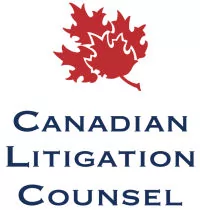- with Senior Company Executives, HR and Finance and Tax Executives
- with readers working within the Automotive, Environment & Waste Management and Insurance industries
Case citation: Workman Optometry Professional Corporation v. Certas Home and Auto Insurance Company, 2023 ONSC 3356
Takeaways for Insurers:
- Business interruption policies will not generally cover losses of profit related to COVID-19 unless there is a physical component of damage or alteration.
- A virus cannot be considered to cause physical loss or damage to property without alteration or damage to the property.
- Loss of use will generally not fall within the meaning of physical loss or damage.
Summary:
The Ontario Supreme Court recently examined the ability to recover for lost revenue associated with the COVID-19 pandemic through standard form business interruption insurance policies. These policies insure all risks of physical loss or damage to property except as otherwise provided. Losses insured include loss of earnings or profits where an interruption to business results from physical loss or damage to property.
This class action matter arose from a number of businesses that purchased business interruption policies from a variety of Canadian insurers. Policyholders attempted to claim under these policies for loss of revenue due to the pandemic, these claims had been denied.
This dispute centered on whether losses associated with COVID-19 and related measures could fall within "physical loss or damage to property." The issues analyzed by the Court were:
- Can the presence of the COVID-19 virus cause physical loss or damage to property within the meaning of the business interruption provisions of each defendant's property insurance wordings?
- Can an order of a civil authority in respect of business activities made during the COVID-19 pandemic cause physical loss or damage to property within the meaning of the business interruption provisions of each defendant's property insurance wordings?
- If the answer to either of the two above questions is "yes", are there any exclusions that could apply to exclude coverage for the damages?
Can the presence of the COVID-19 virus cause physical loss or damage to property within the meaning of the business interruption provisions?
The plaintiffs advanced three arguments:
- The presence of the COVID-19 virus in the insured premises and on their property constituted physical loss or damage.
- The physical loss or damage to property in the policies includes loss of use of property which occurred due to their inability to operate for long periods during the pandemic.
- The defendants added express pandemic exclusions to commercial property insurance policies after the pandemic, which shows the policies issued before the pandemic must have included coverage for pandemic-related losses.
The plaintiffs argued that the nature of the policies was to provide coverage for all risks provided there was a physical dimension. The plaintiffs contended that COVID-19 was a physical thing that spreads to humans in a physical manner through landing on surfaces or by being in the air.
The Court rejected this argument noting that while "all risks" policies are broad, the phrase "physical loss of or damage to property" restricts coverage to physical loss or damage.
Physical damage is defined in Canadian law as detrimental or harmful distinct, demonstrable, physical alteration of property or a harmful alteration in the appearance, shape, colour, or other material dimension of the insured property. Physical loss was noted to refer to a situation where the insured property no longer exists or is lost to the insured. The phrase "physical loss or damage" was found to convey to the average person that the property was harmed or lost in a tangible or concrete way. Expert evidence established that COVID-19 does not adversely alter, harm, or cause the loss or destruction of inanimate surfaces. The Court thus concluded that associated losses did not fall within the meaning of physical loss or damage to property.
The second argument centered on whether the presence of COVID-19 on the insured's properties caused a "loss of use" falling within the meaning of physical loss of or damage to property due to the hazard it presented. The Court rejected this noting in ordinary usage "physical loss of or damage to property" would not be understood to include loss of use.
Lastly, it was noted the defendants had implemented various COVID-19 pandemic exclusions that were created shortly after this litigation was started. The plaintiffs noted the exclusions contained language that "modifies any coverage otherwise provided by this policy or any forms or endorsements attached to this policy." They argued as modification was necessary that policies issued prior to the exclusions must have contained coverage for pandemic related losses.
The Court noted evidence of subsequent conduct by the insurers was admissible only where the wording of the policy was ambiguous. As the wording was found to be unambiguous the Court could not consider the subsequent conduct.
Can an order of a civil authority made due to the COVID-19 pandemic cause physical loss or damage to property within the meaning of the business interruption provisions of the policies?
The plaintiffs argued that while the civil orders do not themselves cause physical loss or damage to property, the orders were made in response to the effects of COVID-19 on insured property and deprived the plaintiffs of the use of their insured property in pursuing their businesses.
This argument was rejected as the orders simply regulated the plaintiff's use and occupation of their property rather than required its destruction.
If the answer to either of the two above questions is "yes", are there any exclusions that could apply to exclude coverage for the damages?
The Court deemed it unnecessary to comment on exclusions given the lack of coverage found.
* * *
Brownlee LLP is a member of the Canadian Litigation Counsel, a nationwide affiliation of independent law firms .
The content of this article is intended to provide a general guide to the subject matter. Specialist advice should be sought about your specific circumstances.


